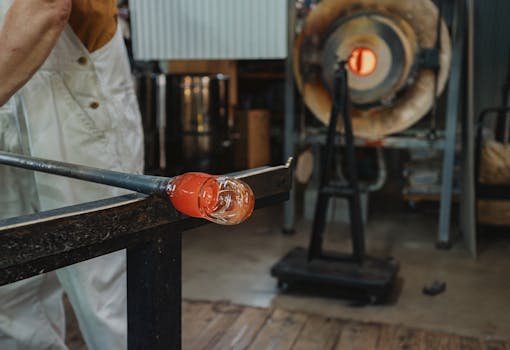
**
The future of glass manufacturing is here. Glass Futures, a pioneering research and development center based in St Helens, UK, has officially lit its revolutionary £54 million furnace. This landmark event marks a significant leap forward in sustainable glass production, promising cleaner, more efficient, and innovative methods for creating this ubiquitous material. The new furnace represents a monumental investment in the UK's manufacturing sector and holds global implications for the glass industry. This cutting-edge technology is poised to redefine the landscape of glassmaking, impacting everything from the packaging industry to architectural design.
A Revolution in Glassmaking: Sustainable Practices and Technological Advancements
The newly commissioned furnace at Glass Futures isn't just another upgrade; it’s a paradigm shift in glass production. This state-of-the-art facility boasts a range of innovative features designed to address key challenges facing the industry, including:
Reduced carbon emissions: A major focus is on significantly reducing the carbon footprint of glass manufacturing. This involves exploring and implementing alternative fuels and energy sources, a critical factor in meeting global sustainability targets. The furnace utilizes advanced combustion techniques and incorporates carbon capture technologies, promising a drastically lower environmental impact. This is crucial in tackling the challenges of green glass manufacturing and sustainable packaging solutions.
Enhanced energy efficiency: The furnace is engineered for optimized energy consumption, minimizing waste and maximizing production efficiency. This translates to lower operating costs for glass manufacturers and contributes to a more sustainable business model. The advanced furnace design and the use of advanced materials are key factors in achieving this efficiency.
Improved glass quality: The advanced control systems within the furnace allow for a higher degree of precision in the glassmaking process, resulting in improved quality and consistency of the final product. This enhanced glass quality control is essential for various industries that depend on high-quality glass components.
Increased production flexibility: The flexible design of the furnace allows for experimentation with different types of glass and raw materials, opening up avenues for innovation and the development of new glass products. This flexible manufacturing is crucial for meeting diverse market demands and responding to evolving consumer preferences.
The £54 Million Investment: A Catalyst for Innovation and Growth
The £54 million investment in the Glass Futures facility represents a significant commitment to the future of the UK's manufacturing sector. This project has attracted significant support from both public and private sectors, underscoring the importance of innovation in glass production. The funding has enabled the construction of a world-class facility equipped with cutting-edge technology, attracting leading researchers and engineers to collaborate on developing sustainable glassmaking practices. The project is expected to generate significant economic benefits, creating jobs and driving growth within the region and beyond.
Collaboration and Partnerships: A Global Impact
Glass Futures is more than just a research facility; it’s a collaborative hub bringing together leading glass manufacturers, research institutions, and technology providers. This collaborative approach is crucial for accelerating the adoption of sustainable practices and fostering innovation throughout the entire glass industry supply chain. Partnerships are key to developing and implementing innovative solutions, making the transition to cleaner and more efficient glass production a reality. This includes collaboration on glass recycling technologies and the development of new glass compositions.
The Future of Glass: Sustainable Solutions and Market Opportunities
The successful lighting of the new furnace at Glass Futures marks a turning point for the glass industry. It opens up exciting possibilities for the development of more sustainable and innovative glass products. This includes exploring new applications for recycled glass, developing new glass compositions with enhanced properties, and optimizing manufacturing processes to minimize environmental impact.
The increased focus on sustainable glass packaging is a major driver of innovation in the industry. Brands are increasingly seeking eco-friendly solutions to reduce their environmental footprint, making sustainable glass production more critical than ever before. The development of bio-based glass and the optimization of glass recycling processes are also key areas of focus.
Moreover, the advancements achieved at Glass Futures have the potential to revolutionize other sectors that rely on high-quality glass. This includes the architectural industry, where innovative glass products can enhance energy efficiency and improve building design. The automotive industry also stands to benefit, with potential applications in lightweighting vehicles and improving fuel efficiency.
Conclusion: A Bright Future for Glass Manufacturing
The lighting of Glass Futures' revolutionary furnace signals a bright future for the glass manufacturing industry. The facility’s innovative technologies and collaborative approach are poised to revolutionize glass production, leading to more sustainable, efficient, and innovative solutions. This landmark achievement underscores the importance of investing in research and development to drive innovation and address global challenges. The implications of this breakthrough are far-reaching, impacting not only the glass industry itself but also a wide range of sectors that utilize glass in their products and processes. The success of Glass Futures serves as a beacon of hope for a greener, more sustainable future.



















